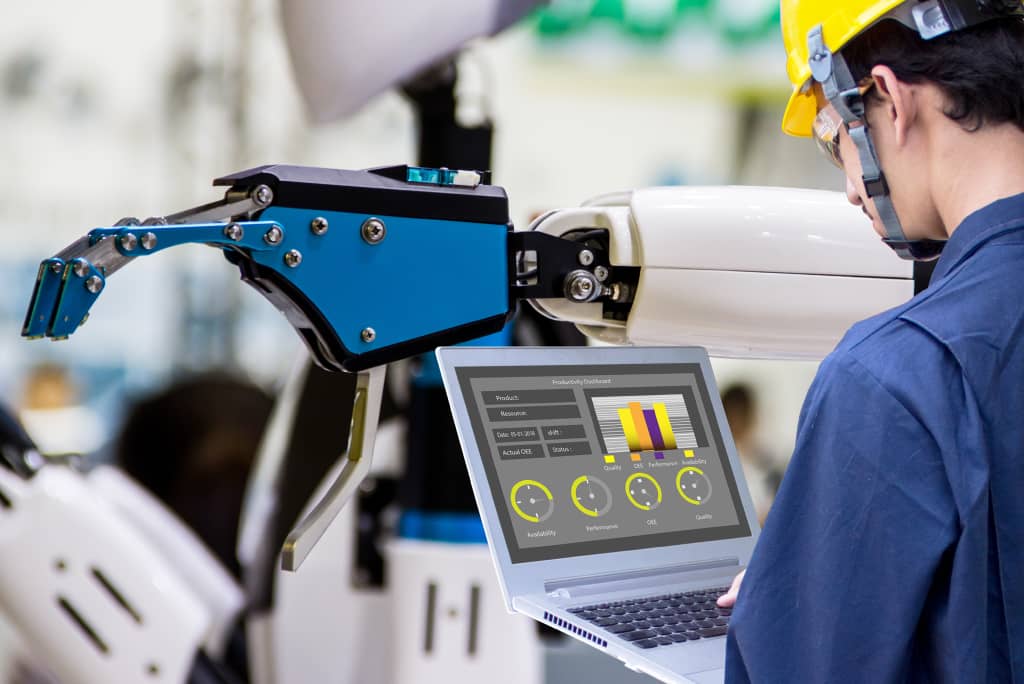RECENT POSTS

Constructing Connected Facilities with Rockwell’s Integrated Architecture Builder
Industry 4.0 promises unprecedented performance through complete digital connectivity. The concept involves linking all plant systems in a cohesive information architecture that encompasses sensors, controllers, networks, and cloud platforms. Yet cobbling disparate components into a functional whole remains challenging when different vendors use proprietary communication protocols.
This is where Rockwell Automation’s Integrated Architecture Builder—provides a unified environment to seamlessly construct and manage connections across assets.
Rockwell Automation Integrated Architecture Builder Overview
Rockwell Automation deconstructs Industry 4.0 complexity through its Integrated Architecture approach. This framework provides standards and technologies that allow customers to holistically manage devices, machine processes, and production flows. As an open model, Integrated Architecture freely incorporates third-party equipment rather than locking users into proprietary ecosystems.
At the core sits the Integrated Architecture Builder toolkit, functioning as the central dashboard for visualizing and configuring network linkages between the controllers, drives, instrumentation, and information software built on Integrated Architecture. Pre-defined templates, wizards, and drag-and-drop controls simplify historically tedious tasks like assigning IP addresses or setting up communication modules.
For example, connected EtherNet/IP devices can be programmed through point-and-click commands rather than by writing raw code. Software-based virtualization removes dependency on physical hardware during initial testing. The Builder also manages essential cybersecurity policies like user authentication and encryption.
Using the Builder’s library of Integrated Architecture products, even novice engineers can rapidly map out connections to build a functioning architectural blueprint. Ongoing management and adjustments are simplified through the Builder’s central interface versus individually configuring every single component.
This unified connectivity canvas establishes the foundation for optimized reliability, speed, flexibility, and cost savings throughout a facility.
Achieving Situational Awareness Through a Connected SCADA Architecture
A prime use case for Rockwell Automation’s Integrated Architecture Builder lies in system implementation. SCADA refers to platforms aggregating and visualizing real-time data across dispersed plant floor sources to enable holistic monitoring and control through centralized HMIs.
As facilities expand, evolve equipment, and implement new data streams, keeping a SCADA system functional grows overwhelming. Each added device or sensor requires manually coding connectivity directly in cumbersome configuration files. Lacking visualization compounds troubleshooting connection errors and lag times.
Rockwell Automation SCADA powered by FactoryTalk Network Manager overcomes these hurdles through tight integration with Integrated ArchitectureBuilder. It centrally defines and documents all SCADA network communications within Integrated Architecture Builder’s intuitive interface rather than maintaining separate configuration files. Updates automatically sync to the SCADA system without manual intervention. This ensures a single source of truth through the visualization canvas, removing gaps between documentation and actual implementations.
With integrated troubleshooting tools, engineers rapidly trace and resolve bottlenecks in data flows from sensors and control servers to HMIs, using pre-defined diagnostics. Operators gain trust in the live system through the Builder’s simulation testing to validate performance before deployment. Ongoing maintenance is simplified through the Builder’s central platform, which abstracts away the complex coding languages required to manage SCADA communications.
Carefully Planning an Integrated SCADA Environment
The system’s capabilities are unlocked by constructing a connected SCADA architecture scaled in proportion to its complexity. Carefully scoping use cases, phasing rollouts, and implementing design standards becomes imperative to manage data, insights, and users in a governance-minded fashion. Attempting to retrofit these considerations after deployment slows ROI realization.
Therefore, engaging an experienced Rockwell Automation SCADA architect early on proves pivotal. Industry-specific expertise helps tailor Integrated Architecture implementations to precise operational needs around visualization, control capabilities, analytics integration, and more. A methodical approach covers all bases—from network security considerations to contingency planning and user experience mapping.
Pacific Blue Engineering lends this critical guidance through each phase of rollout, from planning to maintenance. Having managed expansive SCADA deployments across industries, Pacific Blue overcomes the roadblocks encountered when translating operational requirements into technical specifications for the Builder. PBE’s team stands by to continually optimize and enhance Integrated Architecture in line with evolving demands.
Architecting with the future in mind ultimately determines how much value can be extracted from a connected SCADA environment. Purposeful design around business objectives allows for incremental enhancements like analytics or MES rather than requiring dramatic overhauls down the road. Pacific Blue facilitates this future-ready construction path by leveraging Rockwell Automation’s Integrated Architecture innovations.
Overcome System Complexity
As campuses grow and operations modernize, maintaining control and visibility presents ever-growing challenges. Disjointed communications that once sufficed rapidly accelerate complexity. Rockwell Automation Integrated architecture builder powered by Integrated Architecture Builder harmonizes connections on an open yet unified platform.
Combined with rigorous planning and implementation support from partners like Pacific Blue Engineering, organizations can feel confident in building a completely connected facility. Integrated data feeds spur faster decisions, proactive maintenance, smoother production, and lower costs through holistic monitoring.
See how Pacific Blue Engineering and Rockwell Automation’s Integrated Architecture Builder can create a safe and secure connected facility. Contact us at (657) 201-8603 or request a consultation to discuss your control systems engineering needs.
similar posts
Certifications
Contact Us
Telephone:
Corporate Office “The Shop”
Pacific Blue Engineering, LLC
2880 Orange Ave
Long Beach, CA 90755
© All contents copyright © 2023 by Pacific Blue Engineering













